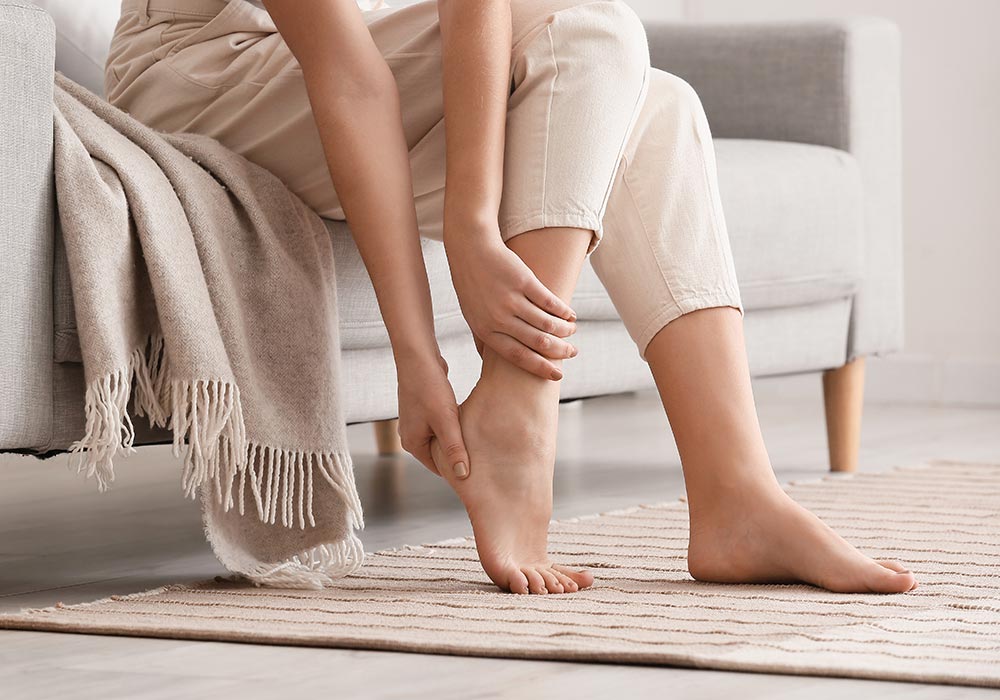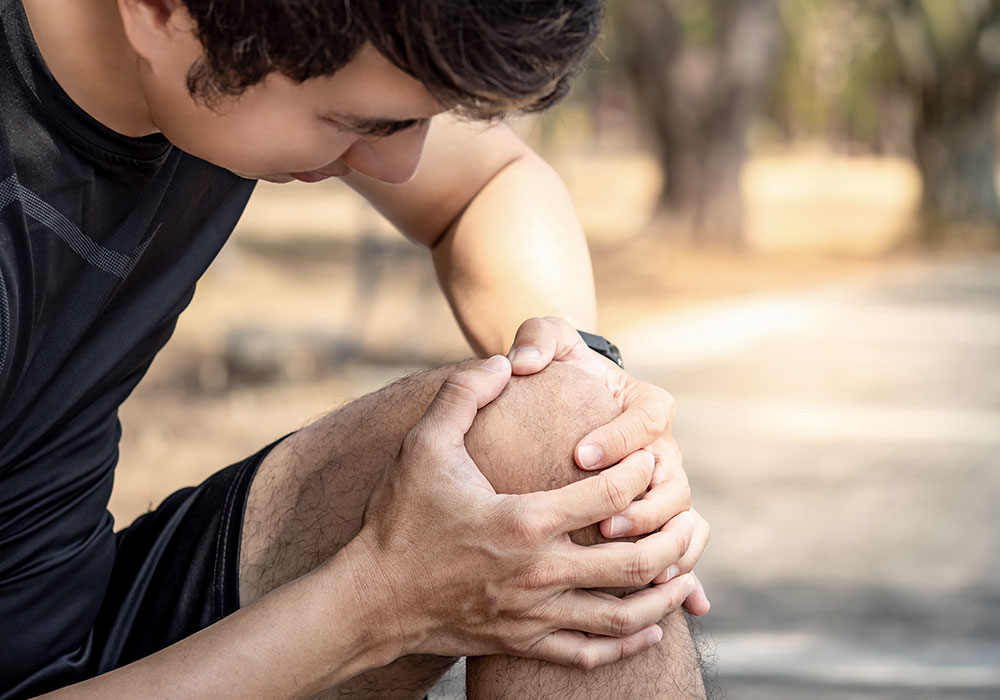Vertebral blockage is a condition that often causes severe discomfort and can significantly restrict mobility. In the following, we will explain and show you how we can treat this condition.
What would we be if we didn’t have our hands? We often only realize the importance of our hands when their functions are limited. Be it in Michelangelo’s time, when he designed the Sistine Chapel, in Mozart’s or Goethe’s time – hands have always played and continue to play a central role. They allow us to capture our thoughts in writing, are the tools of our artistic freedom and breathe life into the notes. It is no coincidence that the hand occupies a large area of our cerebral cortex.
Hands are not only important in art and culture, but of course also in everyday life, and there is hardly any other part of the body where fine motor skills are of such crucial importance. This makes it all the more important to take even the smallest complaints seriously and to treat them correctly. Treatment in hand surgery is as varied as the functions of the hand itself and ranges from specific occupational therapy to complex surgical procedures. A good, individual consultation with the patient is a prerequisite for this.

Dr. med. Nader Tabrizi

Dr. med. Stefan Chwalek

Dr. med. Isabella Gruber
The hand is an extremely complex and versatile organ that is essential for numerous functions in daily life. It is made up of various bones, joints, muscles, tendons, nerves and blood vessels that work together harmoniously to enable movement and sensation. The hand consists of the following anatomical structures:
Bones
The bones of the hand form the stable skeleton and are essential for its many functions. They give the hand structure and stability, enable precise mobility through numerous joints and serve as levers through which muscles can transmit force. At the same time, they protect important structures such as nerves, blood vessels and tendons from injury. Without this sophisticated bone system, the hand would be neither stable nor flexible enough to master the complex tasks of everyday life. The hand is made up of a total of 27 bones, which can be divided into three sections:
- Carpal bones (carpalia)
8 small bones form the connection to the forearm. - Metacarpal bones (metacarpalia)
The framework of the palm consists of 5 tubular bones. - Finger bones (phalanges)
Each finger has 3 phalanges (except the thumb, which has only 2 phalanges). The fingers therefore have a total of 14 bones per hand.
Joints
The joints of the hand enable its mobility and versatility. The joints allow you to move your fingers, thumb and hand in different directions. They ensure that the hand remains flexible, while at the same time allowing targeted and controlled movements. Without joints, the hand would be stiff and its function severely restricted. The most important joints in the hand are
- Wrist
This is the connection between the forearm and the carpal bones. - Metacarpophalangeal joints
They allow the fingers to bend and stretch. - Thumb saddle joint
This joint enables the opposing movement of the thumb (thumb against finger).
Muscles and tendons
The muscles generate the force required to move the fingers, thumb and hand. The tendons transfer this muscle power to the bones, enabling targeted movements. Together they ensure both powerful grips and delicate, controlled movements. These muscles and tendons shape the structure of the hand:
- Extrinsic muscles
The muscles of the forearm, which pull tendons towards the hand, enable powerful movements. - Intrinsic muscles
Fine muscles within the hand are responsible for fine motor skills. - Tendons
They connect the muscles to the bones and allow the hand to move.
Nerves and blood vessels
The nerves allow the sensation of touch, temperature, pain and pressure. They also control the movement of the hand by transmitting signals from the brain to the muscles.
The blood vessels supply the hand with oxygen and nutrients, which are important for the function and health of muscles, tendons, bones and skin. At the same time, they remove waste products and support wound healing in the event of injuries.
Without nerves and blood vessels, the hand would not be able to feel, move or be adequately supplied with nutrients. Essential for functioning hands are
- Median nerve (Nervus medianus)
It supplies the palm, thumb, index and middle fingers. - Ulnar nerve (ulnar nerve)
It is responsible for the little finger and parts of the ring finger. - Radial nerve (radial nerve)
This controls the extensor movement of the fingers and hand. - Blood vessels
They supply the hand with oxygen and nutrients (e.g. radial artery).
Skin and sensory cells
The skin protects internal structures such as bones, muscles, tendons and nerves from injuries, pressure and external influences. At the same time, it is flexible and resistant so that it can follow the movements of the hand.
The skin contains numerous sensory cells (receptors) that react to touch, pressure, temperature and pain. They allow you to perceive your environment – e.g. by feeling the surface of an object or by sensing heat and cold.
Together, the skin and sensory cells ensure that the hand functions as a sensory organ and can absorb the finest stimuli while remaining protected from external influences.
The hand has a variety of functions that are made possible by its unique structure:
- Grasping
The hands can be used to hold, carry or manipulate/shape objects. - Fine motor skills
Precise movements such as writing, drawing, sewing or playing instruments are made possible by the hands. - Exerting force
With a firm grip or pressure, you can lift heavy loads or handle a hammer, for example. - Touch
The hand contains numerous sensory cells for the perception of temperature, pain and pressure. - Gestures and communication
Hands are used for non-verbal communication (gestures, sign language). - Protection and reflexes
Automatic movements of the hands are intended to protect the body, e.g. by cushioning a fall at lightning speed.
- Traumatic injuries
These are directly related to a trauma. - Chronic consequences of injury (post-traumatic)
These are often the result of primarily overlooked injuries or the consequence of severe traumatic injuries that lead to degenerative processes after the trauma. Often it is only possible to recognize specific connections and, if necessary, prevent further injury consequences through a differentiated and detailed examination. - Chronic degenerative changes
These are conditions that are not directly or indirectly related to trauma and are often associated with the way the hand is used over a long period of time.
- Common hand complaints include carpal tunnel syndrome, snapping fingers, nerve bottleneck syndromes, tendon sheath inflammation, ganglions and restricted finger movement.
- Chronic post-traumatic hand injuries are, for example, structural disorders of the carpal bones, lack of bone healing or ligament and tendon injuries.
- Chronic degenerative complaints of the hand include finger and wrist arthrosis as well as rhizarthrosis (thumb saddle joint arthrosis).
If you have acute or chronic hand complaints, you’ve come to the right place. Our experienced team of doctors has many years of experience in this specialist field.
Due to the complexity of the interrelated hand functions in particular, a specialist examination is often urgently required in order to be able to initiate appropriate treatment measures in good time. In this way, permanent and consequential damage can be avoided at best.
The treatment options for the hand range from conservative measures to complex surgical procedures. In particular, the decision on measures for immobilization or early exercise for hand injuries is of central importance for their function.
Injections and hyaluronic acid treatments as well as special forms of occupational therapy and physiotherapy are also often used in the conservative treatment of hand complaints. In some special cases, simple surgical measures can also achieve very good relief of symptoms.
Tendon rupture: What happens when a tendon tears?
A tendon rupture, also known as tendinosis, can occur due to various factors that can affect the structural integrity of the tendons. In the following, we will introduce you to different types of tendon ruptures.
Tendon injuries: Which ones are there?
Tendons are there to transfer the force of a muscle to a bone. They have only a few cells that divide slowly. In the process, they renew the tissue. Because of the metabolism, tendon injuries take longer to heal.
Difference osteoarthritis and arthritis
Osteoarthritis is one of the most common joint diseases, causing the destruction of the cartilage layer of a joint. Arthritis, on the other hand, is an inflammatory joint disease that can occur in episodes.



